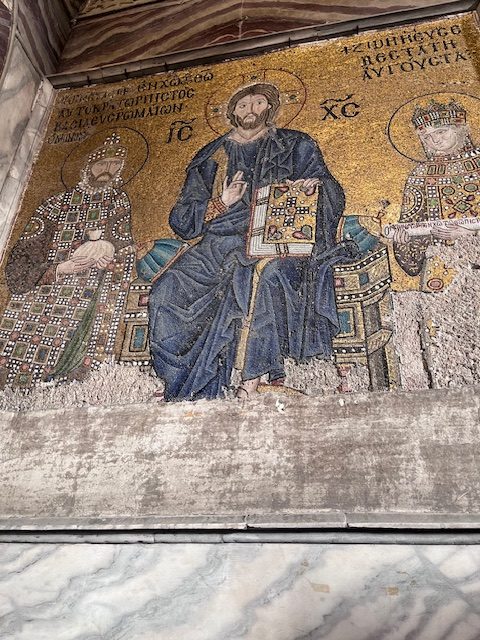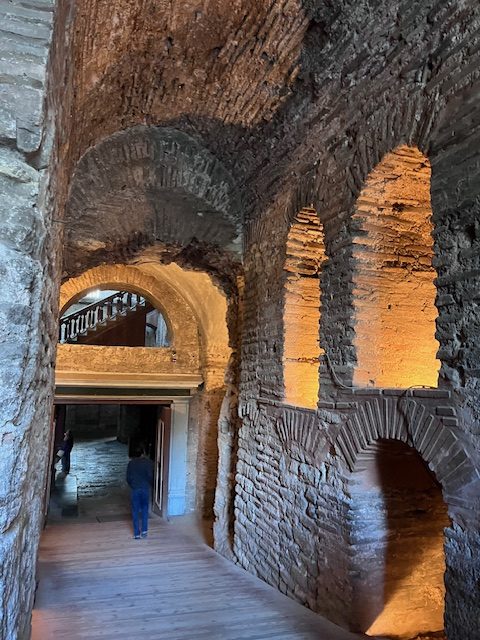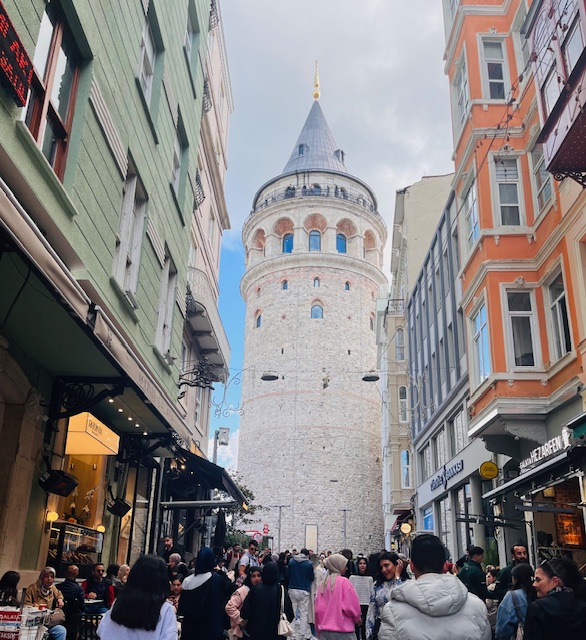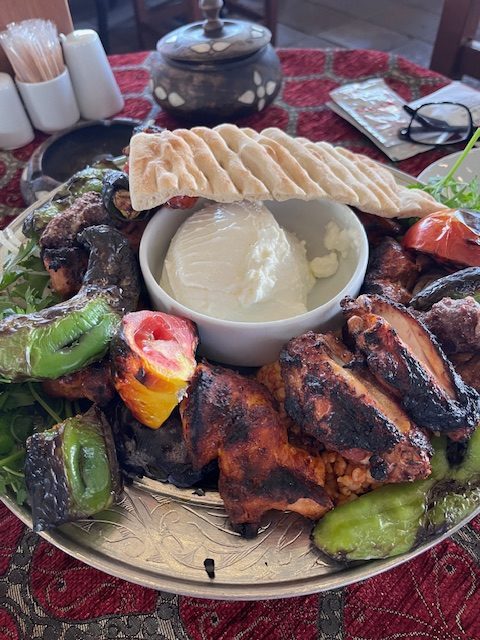Growing up in the Eastern Syriac Orthodox Church, the name Constantinople was more than just a historical term. I first encountered this grand city during Sunday School, where biblical stories of the past came alive. It was about the Kusthanthinopolis Sunnahados (The Synod of Constantinople) during church services, the name rolling off tongues with reverence and familiarity. To me, it was a mystical place, more a symbol than a city. It wasn’t until I was a teen that I came to realize that this ancient biblical stronghold, once the heart of empires, is the city we now know as Istanbul.

Istandbul, the city that bridges Asia with Europe has always possessed a magical mysticism. I was constantly curious to know about the culture, anthropology, and history of the place. Needless to say all the great food and history blogs about the place are something you should not miss.
Recently, when a friend suggested ‘Museum of Innocence’ By Orhan Pamuk, I did not think twice about picking it up- the idea was to get a good idea of Istanbul, the people and how they loved. We only had two days there, but Turkey by any means needs at least two weeks to see. This is a place we are planning to visit again but sharing here what little we experienced.
Geography
Most of the country of Turkey is in Asia, and the area is also called Anatolia. Turkey has the Black Sea to the north and the Aegean Sea to the west, with the countries of Bulgaria, Greece, Georgia, Armenia, Azerbaijan, Iran, Iraq, and Syria bordering it—yes, quite a few borders for a relatively small country.
The city of Istanbul is in the western part of the country and spans across Asia and Europe. The European side and Asian side are separated by the Bosphorus Strait. The Bosphorus Strait is a narrow waterway that connects the Black Sea to the Sea of Marmara. The Golden Horn is a natural harbor on the northern side of Istanbul that provides access to the Bosphorus Strait.
History of Istanbul
You cannot get a good picture of the place without understanding the history of this place. Adding a list of interesting historical events that formed the city.
660 BCE: Greek Colonization & founding of Byzantium was founded by Greek colonists led by Byzas due to its strategic location along the Bosporus Strait.
330 CE: Constantine the Great renamed Byzantium to Constantinople and declared it the capital of the Roman Empire, marking its transformation into a major imperial city.
330 CE – 1453 CE: Byzantine Empire Era
- 532 CE: The Nika Riots led to significant destruction, and Emperor Justinian I rebuilt the city, including the monumental Hagia Sophia.
- 1204: The Fourth Crusade sacked Constantinople, establishing the Latin Empire temporarily until 1261.
- 1453 CE: Constantinople fell to the Ottoman Empire, marking the end of Byzantine rule.
1453 CE – 1922 CE Ottoman Empire Period
- 1453: Mehmed II (1453): Captured Constantinople, renamed it Istanbul, and made it the capital of the Ottoman Empire.
- 16th Century: The city thrived under Suleiman the Magnificent, becoming a center of culture and architecture with structures by Mimar Sinan.
- 1856: Construction of Dolmabahçe Palace, reflecting European influence.
1922 – 1930 End of the Ottoman Empire and Republic Formation
- 1922: The Ottoman Empire dissolved following the Turkish War of Independence led by Mustafa Kemal Atatürk.
- 1923: The Republic of Turkey was established, with Ankara as the new capital.
- 1930: The name Istanbul was officially adopted.
20th – 21st Century: Modern Era Developments
- 1973: Completion of the Bosporus Bridge, connecting Europe and Asia.
- 2013: Gezi Park protests showcased political and social tensions in the city.
- 2016: An attempted military coup affected Istanbul, emphasizing its role in Turkish politics.
Places we visited
Hagia Sophia (Ayasofya)

If there is one place that you should not miss in Istanbul, it is the Hagia Sophia. Build almost 1500 years ago , it’s an architectural marvel and the place itself has gone through many changes. One great thing to note is even though different religions and empires took ownership of the place, almost nothing Is destroyed. Everything is in place for the generations to revere. This is a symbol of coexistence and evolution.
Make sure to book early and look for entry time. This place like the blue mosque can be closed during prayer time. If you try to take the ticket at the location, be ready to wait in long lines. Also, there are days and lines where only Turkish citizens are allowed. Be respectful of the rules.
Built by Emperor Justinian I in 537 as the world’s largest Cathedral and the seat of Eastern Orthodox Church for almost a thousand years. All the church history I learned in Orthodox churches happened to have occurred in this church. Ottomans later converted this place into a Muslim Mosque by Sultan Mehmed II . This was converted to a secular museum under Mustafa Kemal Atatürk in from 1935 to 2020 but converted back to a Mosque Again in 2020
Make sure to visit the museum, which is just within walking distance from the mosque. You will learn all about the history and interesting background stories of this place there

Few interesting things :
- I was casually talking to the guards about the interesting history of Hagia Sophia and he shared a very interesting story. Look out for a mosaic figure of Empress Zoe the Emperor in the south gallery with Christ in the center. If you look closely, you can see the face of the emperor is a bit crooked and not up to the beauty standards of other figures. The story is that the empress was a bit notorious and has married three times each time killing her previous husband. The mosaic was originally created to commemorate Zoe’s first marriage but was later modified to reflect changes in her marital status. Each time Zoe married, the mosaic was altered to replace the image of her previous husband with that of her current one. Hence the distortions- Architects also have their limits.
- Some of the columns supporting the dome are leaning which is the result of constant earthquakes in the area
- Most of the mosaics have Kings alongside Jesus and angels- Kings were considered appointed by the Gods and you can see it all over the Mosque
- The conversion of a cathedral to a mosque is evident throughout – Mosaics of the Virgin Mary, and 12 Apostles are depicted on the walls alongside the Archangels
- Vikings: The Varangian Guards, a group of Viking soldiers were composed of Norse mercenaries who served as personal bodyguards to the Byzantine emperors. Look for inscriptions carved into the marble balustrades in the upper gallery of the church. These inscriptions are believed to have been made by Varangian Guardsmen who were stationed at or visiting Hagia Sophia. Watch the Netflix show Vikings of Valhalla to see some of the historic depictions.
Legends:
Older structures like this cannot be without their legends and ghost stories. Here are some we heard.
- An angel is supposed to be guarding the Mosque
- Justinian’s treasure hidden beneath the Mosque
- A priest who will return to finish his half-done liturgy on the day Christianity returns
- Secret chambers exist in the place but are lost to the modern world
Hagia Irene

In the same complex as Hagia Sophia, you can see a much older church called Hagia Irene, Which is believed to be the oldest in Turkey, predating Hagia Sophia. It was originally commissioned by Emperor Constantine the Great in the 4th century after he declared Christianity the official religion of the Roman Empire.

We decided to visit the place mainly because we read that this is where the early Christian councils where convened like the Second Council of Constantinople in which Christ’s dual nature of humans and god was declared by the church. Nicaea council to restore veneration of icons was also believed to have happened here.
Topkapi Palace
The grand palace of the Ottoman sultans offers a glimpse is in the same complex as the Hagia Sophia.
Blue Mosque (Sultan Ahmed Mosque)

Known for its stunning blue tile interiors and impressive six minarets, this mosque is one of Istanbul’s most iconic. Visit and prey – it is a wonderful experience.
Milion Stone
This is the starting point of Roman road system. When we tried to find it it was under construction, but walk through the Blue mosque complex and you will see this old construction. Milion was part of Constantine’s ambitious project to make Constantinople the new center of the Roman Empire.
Roman Walls
When you drive around the city you are likely to see a lot of old walls , mostly in ruins. These are also called Walls of Constantinople, it is a series of defensive stone walls that have protected the city since its establishment as the capital of the Roman Empire in 4th century. Although we didn’t get close, it has an inner wall , outer wall and a moat.
Valens Aqueduct
You care likely to pass through this if you drive into the city . It was built to supply water to the city. You will not miss this structure with two storied arch bridges
Basilica Cistern
This is also close to Hagia Sophia complex and it is famous for its Medusa head carvings. It’s a cistern that collected water for the area. Good picture spot.
Grand Bazaar & Spice Bazaar
Traditional Turkish market. Buy Turkish delights, dried fruits, souvenirs and gifts from here. Also pack up some good quality Saffron for your tea.
Galata Tower

Nothing more than a large medieval stone tower beautiful for pics. We didn’t really bother to climb up.

Bosphorus Cruise

A boat ride along the Bosporus and Golden horn – you can see all the palaces and beautiful skyline along the waterfront
Museum of Innocence & Streets from the book

We did a lot of walking in the city and looked up the Museum of innocence based on Pamuks book. If you have read the book take a peek in, but it is not a place I would recommend as there are so many other things to spend your time on. Places and streets around the area are beautiful and strolling the streets is time worth spend.
Turkish Baths (Hamams)
If there is one thing you cannot miss it Is the Hamam experience. Hamam is like a spa where someone scrubs you down with hot water and bubbles- what can be better than that. You come out squeaky clean and refreshed.
Food:

- Tea: Just like Spain where you see people sipping wine everywhere, you will see people drinking back tea here. It is really refreshing and a must try even if you are not a tea drinker
- Turkish coffee: I was not impressed maybe cos of my love for daily 20 Oz Dunkin Donut coffee. The coffee here is hardly 6 Oz and it is powdery. Try it if it’s in your list.
- Sweets: Baklava, Turkish Delights, Kunefe (So different from what I have tried here – yum) and Halvas are some we tried. Loved it all. Buy some Turkish cheese cakes too.
- Kababs & Seafood: You can see a lot of seafood places under the bridge across Bosporus. Definitely try for the view. Food is fresh and delish
- Drinks: Raki is a must try, watch out since it has a much higher alcohol content that normal wine. It has the flavor of anise or licorice and you mix it with water before drinking -It turns milky white when mixed with water.

Note

- All women should cover your head in areas of religious significance like Hagia Sophia and Blue mosque. Carry a scarf, there are guards that will remind you to complete cover your head.
- Be respectful: although Hagia Sophia and Blue mosque are open to visitors they are places of worship. Follow rules while enjoying
- Negotiate: in the bazaars be ready to negotiate & haggle, the tag price is not what the actual value
- Ask the price ahead of getting on a Taxi- watch for drivers giving a different price once you are in
- Istanbul is going to be taken over by Cats, if you have cat allergy maybe this is not your kind of town, stray cats are everywhere.